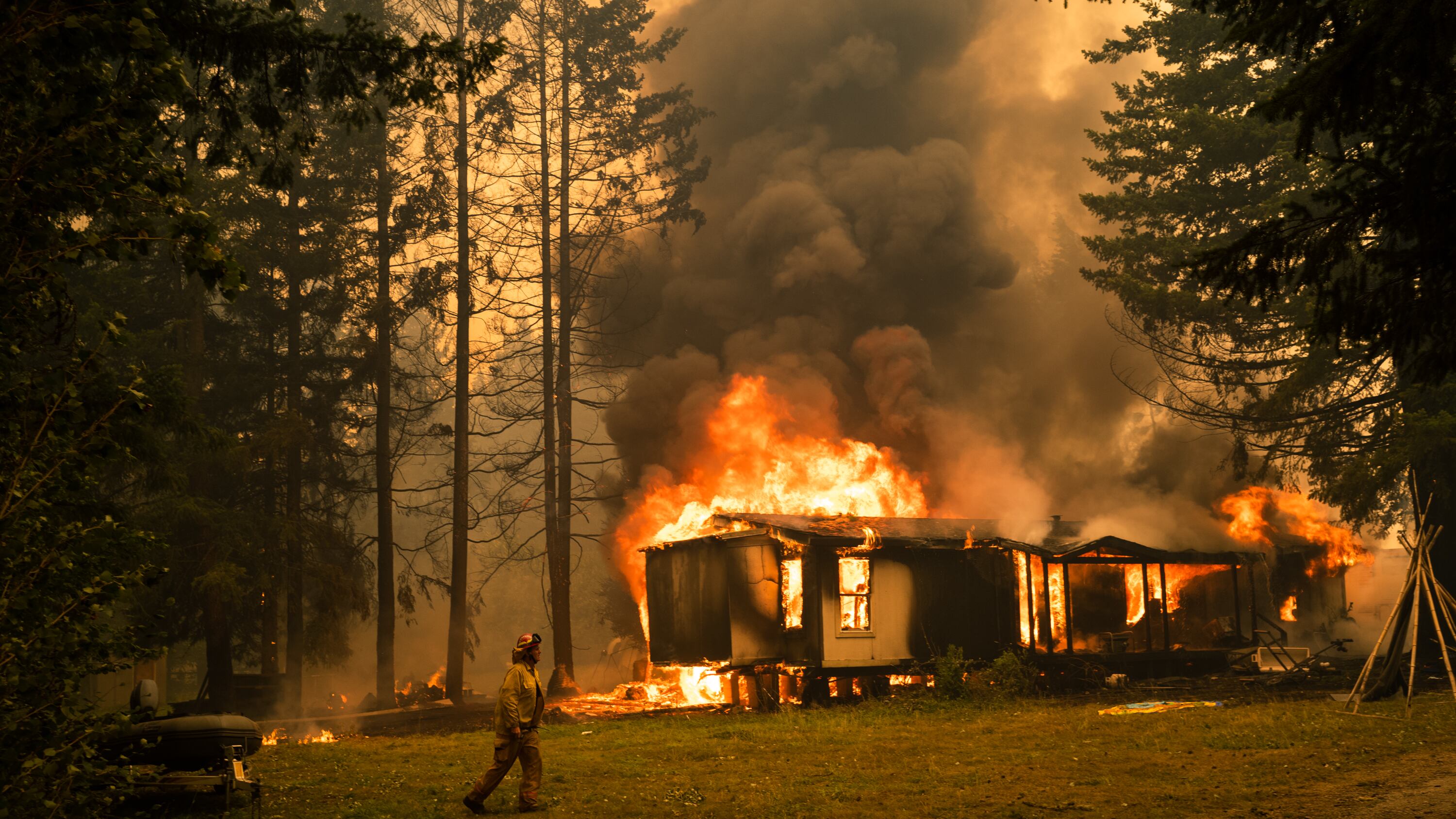At least 1,400 square miles of Oregon have burned in wildfires this week, Gov. Kate Brown announced Thursday afternoon.
Winds continued to drive fires into populated areas today, especially in Clackamas County, where fires threaten the towns of Molalla and Estacada and the cities of Canby and Oregon City are now being told to prepare to evacuate.
That total damage—900,000 acres scorched in fires raging across the Cascades—is triple the figure the governor released Wednesday. That's in part because state officials have a fuller picture of the damage, and in part because fires continue to grow.
"To put that number into perspective, over the last 10 years, we see an average of 500,000 acres burned in an entire year," Brown said. "We've seen that nearly double in the past three days."
The Oregon State Fire Marshal had hoped to catch a break from the weather Thursday, with winds dying down enough to get some of the state's largest fires under control. Instead, the winds continued to push blazes across Clackamas County, one of the three most populous counties in the Portland area.
Fire officials now expect two of the largest fires, the Riverside and Beachie Creek fires, to merge in Clackamas County. Conditions became so unsafe this afternoon that firefighters were forced to retreat from the blazes. Two of that county's largest cities, Oregon City and Canby, are being told to prepare to evacuate.
State and local officials on Thursday afternoon said they still didn't know if the notice warning people to prepare to evacuate would extend into the southeastern edges of Portland. They said that decision would depend on the wind.
At 6 pm, an Oregon Department of Forestry spokesperson said "winds are subsiding." Multnomah County officials have issued no notices to evacuate, but said they're monitoring conditions.
"Unfortunately, the weather system is not yet giving us a reprieve," Brown said earlier in the afternoon. "My teams are telling me that while wind dynamics are changing, we are now facing unstable air conditions that continue to make response efforts very, very difficult."
Brown says the state is still waiting on death toll numbers. But she confirmed 30,000 to 40,000 Oregonians have been evacuated and more continue to be evacuated by the hour.
The firefighting teams include 10 incident management teams, over 3,000 firefighters, firefighters in training, Red Cross volunteers, National Guard members, 30 crews from the Department of Corrections, strike teams from Utah, and the U.S. Army Corps of Engineers. Brown has also put in a request to the U.S. Department of Defense for a battalion of active duty military who are trained in firefighting. Brown has set up a disaster cabinet to deal with the long-lasting impacts of this situation, including the agricultural, social service and health impact of this disaster.
"We need to come close to doubling these efforts over the next couple weeks to get our arms around these fires," Oregon Deputy Fire Chief Doug Grafe said.
The inability to predict the winds was the theme of today's event, leading to more questions than answers. With only 5% containment, it is unclear where the fires will go next. When asked by WW if any parts of Portland or Multnomah County could expect calls to prepare to evacuate, both Grafe and Chief Deputy State Fire Marshal Mariana Ruiz-Temple said it all depends on the winds.
"Hopefully this is the last day of…those down-canyon winds," Grafe said. "That is the greatest threat we are seeing today."
